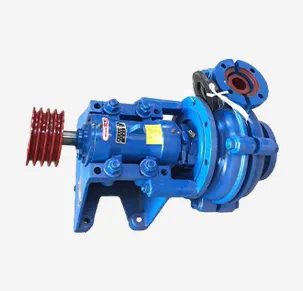Icelandic
- Afrikaans
- Albanian
- Amharic
- Arabic
- Armenian
- Azerbaijani
- Basque
- Belarusian
- Bengali
- Bosnian
- Bulgarian
- Catalan
- Cebuano
- Corsican
- Croatian
- Czech
- Danish
- Dutch
- English
- Esperanto
- Estonian
- Finnish
- French
- Frisian
- Galician
- Georgian
- German
- Greek
- Gujarati
- Haitian Creole
- hausa
- hawaiian
- Hebrew
- Hindi
- Miao
- Hungarian
- Icelandic
- igbo
- Indonesian
- irish
- Italian
- Japanese
- Javanese
- Kannada
- kazakh
- Khmer
- Rwandese
- Korean
- Kurdish
- Kyrgyz
- Lao
- Latin
- Latvian
- Lithuanian
- Luxembourgish
- Macedonian
- Malgashi
- Malay
- Malayalam
- Maltese
- Maori
- Marathi
- Mongolian
- Myanmar
- Nepali
- Norwegian
- Norwegian
- Occitan
- Pashto
- Persian
- Polish
- Portuguese
- Punjabi
- Romanian
- Russian
- Samoan
- Scottish Gaelic
- Serbian
- Sesotho
- Shona
- Sindhi
- Sinhala
- Slovak
- Slovenian
- Somali
- Spanish
- Sundanese
- Swahili
- Swedish
- Tagalog
- Tajik
- Tamil
- Tatar
- Telugu
- Thai
- Turkish
- Turkmen
- Ukrainian
- Urdu
- Uighur
- Uzbek
- Vietnamese
- Welsh
- Bantu
- Yiddish
- Yoruba
- Zulu
Telephone: +86 13120555503
Email: frank@cypump.com
júl . 31, 2024 20:16 Back to list
Exploring the Features and Benefits of Advanced AH Slurry Pump Technology for Industrial Applications
Understanding AH Slurry Pumps An Essential Component in Industrial Applications
Slurry pumps play a crucial role in the mining, mineral processing, and construction industries. Among the various types of slurry pumps, the AH slurry pump stands out due to its durability, efficiency, and versatility. This article explores the features, applications, and maintenance of AH slurry pumps, highlighting their importance in industrial operations.
What is an AH Slurry Pump?
The AH slurry pump is a centrifugal pump specifically designed for handling abrasive, high-density slurries. It is renowned for its ability to transport mixtures of solids and liquids, making it an ideal choice for industries that work with corrosive or erosive materials. The AH designation refers to the pump's specific model series, which is engineered to deliver high performance while minimizing wear and tear.
Key Features of AH Slurry Pumps
1. Robust Construction AH slurry pumps are typically constructed from high-chrome alloys or rubber linings, providing excellent resistance to wear and corrosion. This robustness extends the pump's lifespan, reducing the need for frequent replacements.
2. High Efficiency Designed for optimal hydraulic efficiency, these pumps minimize energy consumption while maximizing performance. Their impeller design and geometry are finely tuned to handle viscous slurries effectively.
3. Versatile Design AH slurry pumps can be configured for various applications, including vertical and horizontal installations. This flexibility allows them to adapt to different workflows and operational requirements.
4. Self-Priming Capability Many AH slurry pumps come with self-priming features, allowing them to start pumping without needing manual priming. This is particularly beneficial in applications where the pump is positioned above the slurry source.
5. Easily Maintainable The design of AH slurry pumps facilitates straightforward maintenance, with key components easily accessible for inspection and replacement. This reduces downtime and operational disruptions.
ah slurry pump

Applications of AH Slurry Pumps
AH slurry pumps are widely used in various sectors, including
- Mining In mining operations, AH slurry pumps are essential for transporting slurries containing minerals, ores, and tailings. Their robust design handles the heavy, abrasive materials typically encountered in these environments.
- Mineral Processing These pumps are integral to mineral processing plants, where they transport concentrated slurries for further processing or refinement.
- Construction In construction, AH slurry pumps are used for dewatering and managing muddy or gravelly materials, supporting efficient site management and material transport.
- Chemical Processing The chemical industry often requires the transportation of corrosive slurries. The materials used in AH slurry pumps' construction provide adequate protection against aggressive chemicals.
Maintenance and Care
Proper maintenance is crucial for the longevity and efficiency of AH slurry pumps. Regular inspections should be conducted to check for wear on impellers and liners. Lubrication of bearings and seals is essential to prevent overheating and ensure smooth operation. Additionally, operators should monitor the pump's performance and look for any signs of cavitation or abnormal vibrations, which could indicate underlying issues.
Conclusion
In summary, AH slurry pumps are indispensable in industries that involve the transportation of abrasive and dense slurries. Their robust construction, high efficiency, and versatility make them an ideal choice for mining, mineral processing, construction, and chemical applications. By investing in quality AH slurry pumps and adhering to regular maintenance practices, industries can enhance their operational efficiency and reduce the costs associated with equipment failure and replacements. Understanding the intricacies of these pumps is essential for any operation that relies on effective slurry handling.
-
Heavy-Duty Mining Sludge Pumps - Wear-Resistant Slurry Handling
NewsAug.02,2025
-
Horizontal Split Case Pump with GPT-4 Turbo | High Efficiency
NewsAug.01,2025
-
ISG Series Pipeline Pump - Chi Yuan Pumps | High Efficiency, Durable Design
NewsAug.01,2025
-
Advanced Flue Gas Desulfurization Pump with GPT-4 Turbo | Durable & Efficient
NewsJul.31,2025
-
ISG Series Vertical Pipeline Pump - Chi Yuan Pumps | Advanced Hydraulic Design&Durable Construction
NewsJul.31,2025
-
ISG Series Vertical Pipeline Pump - Chi Yuan Pumps | Energy Efficient & Low Noise
NewsJul.31,2025










